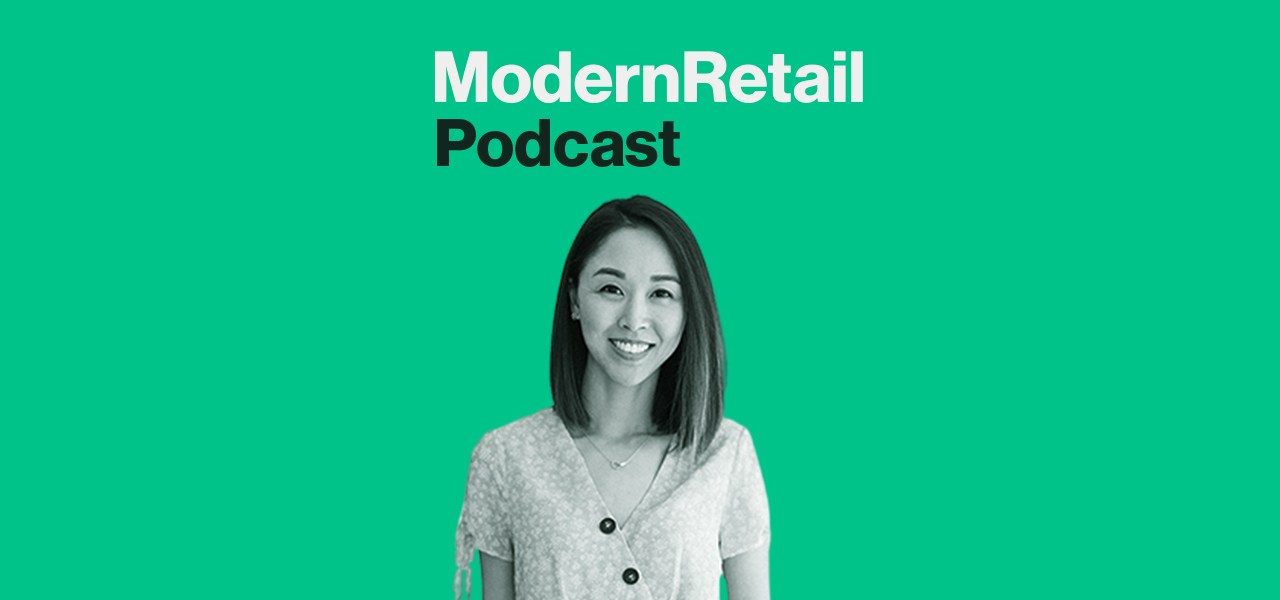Blueland CEO Sarah Paiji Yoo on how the pandemic changed the cleaning supplies aisle

Subscribe: Apple Podcasts | Stitcher | Google Play | Spotify | RSS
Blueland CEO Sarah Paiji Yoo wants you to know that when you pay for cleaning supplies at the grocery stores, you’re mostly buying water. “Oftentimes consumers are paying really for a new plastic bottle — and water, which we already have at home,” Paiji Yoo said on the Modern Retail Podcast, which was recorded live during our Modern Retail Virtual Summit this week.
Blueland sells concentrated tablets for consumers to mix their cleaning supplies on their own. The relatively tiny packaging is another differentiator compared to what you see from Ajax and Dove.
“Existing CPG players were incentivized to have larger, bulkier packaging because this packaging really served as billboards in stores,” Paiji Yoo said.
Blueland goes the direct-to-consumer route, which Paiji Yoo considers to be the only route for products that depend on changing consumer behavior. Its appeal isn’t just that it’s a smaller, new kind of product; Blueland wants to eliminate single-use plastics. In the last two months it’s expanded to the dishwasher and laundry categories (with a powder and tablets, respectively).
The plastic films that keep your typical dishwashing pod together aren’t all that good for the environment. “I think people think that because it dissolves that magically disappear. But unfortunately those plastic mulches enter our water systems,” Paiji Yoo said.
The pandemic has made consumers somewhat more likely to demote previous green concerns in exchange for effectiveness and availability, she said. But as a result of the crisis, she estimated, demand has been 4x what it would have been otherwise.
Ad position: web_incontent_pos1
Here are a few highlights from the conversation, which have been lightly edited for clarity.
Packaging as a billboard
“If you think about traditional CPG, they still today are predominantly distributed through traditional brick-and-mortar retailers. It’s a very different game, where on shelf, size does matter. Front-facing real estate also really matters, so in a way a lot of the existing CPG players were incentivized to have larger, bulkier packaging because this packaging really served as billboards in stores. To that end, it made sense to produce more liquid products. A tiny tablet, it’s really hard to even fit the messaging of how you use this product, much less the ingredients and everything else you want to cram in there. I really do think that these products have historically been developed for the channels they’ve been sold in.”
DTC is smart for a product that consumers need to get the hang of
“We don’t hide from the fact that this is a new behavior and there is education required. It was going to be a lot easier to do that on our own site, our own real estate, to be able to get all that messaging across versus having quiet products on a retail store shelf, where we couldn’t really control exactly what messaging we put out there, and certainly not the volume of messaging [we needed]. During Covid, that direct relationship has translated into a continuous and valuable customer feedback loop. Consumers that previously, very staunchly prioritized non-toxic and ‘eco’ were suddenly very open to trading these benefits for disinfectant claims. It was very helpful to understand what concerns and questions our customers have. Unlike physical products sold in stores, we could easily update our website descriptions, our emails, our social media messaging to more directly address these concerns.”

